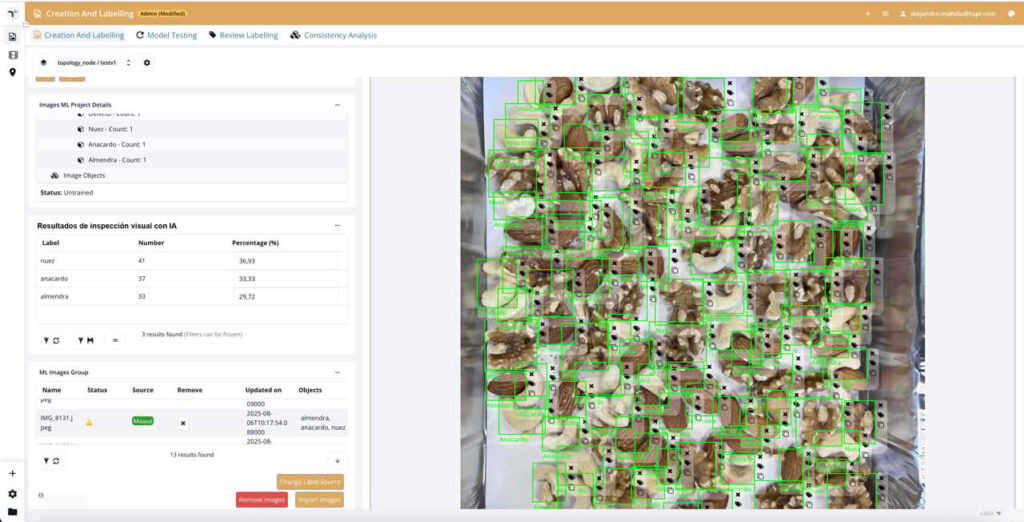Introduction
Mobile networks are growing exponentially in complexity. As operators deploy and maintain multi-vendor 2G, 4G, and 5G environments—often coexisting within the same infrastructure—network engineers face an overwhelming volume of alarms, performance counters, and KPIs to interpret. Manual provisioning, troubleshooting, and intervention are no longer scalable or sustainable in such dynamic ecosystems. Traditional network assurance has relied heavily on manual investigation, where engineers spend hours correlating metrics, logs, and configuration data to identify the root causes of anomalies.
The industry’s ambition is to move beyond reactive management toward automated self-management and self-healing capabilities. This evolution aims to address the escalating complexity and data intensity of modern networks while enabling intelligent, data-driven decision-making that minimizes human intervention. Achieving this vision requires proactive network management techniques powered by Artificial Intelligence (AI) and Machine Learning (ML)—technologies that can simulate expert reasoning, learn from historical data, and make intelligent decisions or predictions. Through these capabilities, AI and ML enable automation across critical functions such as resource optimization, dynamic service provisioning, and predictive maintenance, laying the foundation for fully autonomous operations.
Industry bodies such as TM Forum have formalized this evolution in their Autonomous Network Framework, which defines five levels of automation—from Level 0 (manual operations) to Level 5 (fully autonomous networks). Levels 4 and 5 represent the ultimate goal for many Communications Service Providers (CSPs): networks capable of anticipating operational needs, self-optimizing, and self-configuring to maintain optimal performance without human oversight.
Automation fundamentally changes the equation of network operations. Tupl’s Network Advisor embodies this shift. It is an AI-powered engineering platform that automates the diagnostic and troubleshooting processes that traditionally consume most of an engineer’s time. By leveraging intelligent automation, Network Advisor delivers faster problem resolution, more consistent outcomes, and a measurable reduction in operational expenditure (OPEX).
Zero-touch network automation is no longer a distant vision, it is an achievable reality, but the path to get there might be a rocky one. Let’s explore how this transformation is taking shape and how it is redefining the future of network operations.
The Rocky Road towards Zero-Touch Network Automation
Despite the clear advantages of automation, the journey toward zero-touch network operations is a steep hill to climb, filled with technical, operational, and organizational challenges. Most operators today remain heavily dependent on manual processes for network assurance, where radio engineers dedicate most of their time to repetitive fault analysis and troubleshooting tasks.
Manual Workload and Process Bottlenecks
In a typical operations workflow, every detected issue—such as low data throughput, dropped VoLTE calls, or cell congestion—triggers a manual investigation. Engineers must consult multiple systems and datasets before isolating the cause. A single case might involve:
- Gathering performance counters and KPIs from various OSS tools and vendor-specific systems.
- Comparing performance trends over time to determine whether an issue is transient or persistent.
- Verifying configuration data and neighbor relations to rule out parameter inconsistencies or handover problems.
- Consulting alarm logs, ticket histories, and trouble reports to understand recurrence and previous resolutions.
- Documenting findings and preparing escalation reports for higher-level analysis or vendor coordination.
This process can repeat thousands of times per week across a national network. The bottleneck is not the lack of data—modern OSS and monitoring platforms generate terabytes of metrics daily—but rather the limited human capacity to interpret it all efficiently. The resulting delays increase Mean Time to Repair (MTTR), inflate operational costs (OPEX), and divert engineering resources from proactive optimization.
Tupl’s Network Advisor directly addresses this challenge by codifying expert reasoning into automated workflows. The system performs the same diagnostic steps an experienced engineer would, but hundreds of times faster and with perfect consistency, enabling continuous, data-driven network assurance.
However, operational workload is only one piece of the puzzle. Achieving true zero-touch automation requires overcoming several systemic challenges that affect both technology and organization.
- Legacy Infrastructure
Many Communication Service Providers (CSPs) still operate with legacy OSS/BSS architectures and hybrid network environments where physical, virtualized, and cloud-native elements coexist. Integrating automation across such heterogeneous systems is inherently difficult. Legacy platforms often lack open APIs, use proprietary data models, or depend on manual configuration interfaces that resist orchestration.
To bridge this gap, operators must invest in modernization strategies, including microservices-based OSS, standardized data models (such as TM Forum’s Open Digital Architecture (ODA)), and intent-based interfaces that abstract complexity. A phased approach to automation—starting with closed-loop use cases and progressively scaling to end-to-end orchestration—is essential for minimizing operational risk.
- Data Quality and Silos
Zero-touch automation relies on rich, high-quality, and harmonized data across all network layers. However, CSPs often face data fragmentation, where information resides in isolated silos—performance management systems, configuration databases, alarms repositories, and customer experience tools—each with its own schema and update cadence.
Inconsistent or incomplete data directly degrades model accuracy and automation reliability. According to ETSI ZSM (Zero-touch Network and Service Management) standards, achieving autonomous behavior requires cross-domain data federation and semantic interoperability among systems to ensure that AI-driven decisions are contextually accurate and explainable.
(Reference: ETSI GS ZSM 002 – “Zero-touch network and Service Management (ZSM): Reference Architecture”, 2023.- GS ZSM 007 – V2.1.1 – Zero-touch network and Service Management (ZSM); Terminology for concepts in ZSM)
Additionally, data privacy and governance considerations—particularly when handling subscriber-level analytics—necessitate secure data handling practices, anonymization, and compliance with frameworks such as GDPR.
- Skills and Culture
While automation reduces manual intervention, it simultaneously raises the bar for workforce capability. Zero-touch networks require multi-disciplinary expertise, combining traditional network engineering with AI, data analytics, and DevOps competencies. Engineers must understand both the physical network domain and the software pipelines that drive automation logic.
Equally critical is the cultural transformation required within organizations. Shifting from reactive manual operations to AI-assisted, autonomous systems demands trust in automation outcomes and a willingness to evolve long-standing operational practices. CSPs that invest in continuous skill development and collaborative human-AI workflows are better positioned to unlock the full potential of automation.
- Standardization and Interoperability
The broader ecosystem for autonomous networks is still evolving. Despite progress from TM Forum, ETSI ZSM, and 3GPP SA5, many automation platforms remain vendor-specific and non-interoperable. This fragmentation complicates the deployment of end-to-end automation, especially in multi-vendor environments where interoperability is critical for cross-domain orchestration.
Industry standards play a central role in solving this challenge. Initiatives like TM Forum’s Autonomous Network Framework and ETSI ZSM promote model-driven orchestration, intent-based APIs, and common data models that enable interoperability between different network domains and vendors. However, achieving full compliance and ecosystem alignment remains an ongoing industry effort.
Solutions and Enablers
Addressing the challenges of zero-touch network automation requires more than just introducing AI — it demands a re-engineering of assurance processes, data architectures, and operational workflows. The path forward lies in codifying engineering intelligence into automated, explainable, and scalable systems capable of handling the volume, variety, and velocity of modern network data.
From Manual Checks to Intelligent Automation
In traditional network assurance, the diagnostic process follows a structured yet manual sequence of checks. Each time an anomaly occurs — for example, a cell showing degraded throughput or a VoLTE call drop — a radio engineer performs a predefined set of validations, such as:
- Counter and KPI analysis to identify deviations from baseline performance.
- Trend inspection to distinguish between transient and persistent issues.
- Configuration validation to confirm parameter alignment across network elements.
- Interference verification using spectrum and neighbor data.
- Correlation of logs and alarms to pinpoint the precise subsystem at fault.
Each of these activities requires time and domain expertise. If we denote the time to complete each check as 𝑡𝑖 and the total number of checks per case as 𝑛, the total resolution time 𝑇 can be expressed as:

In conventional operations, this cumulative time is the limiting factor — engineers execute these checks sequentially, often across multiple OSS interfaces and data silos.
Tupl’s Network Advisor transforms this workflow through AI-driven parallelization and rule-based reasoning. The system performs all required checks simultaneously, leveraging real-time data streams, historical context, and pre-trained models that emulate the logic of expert engineers. Instead of relying on manual investigation, the tool conducts an automated Root Cause Analysis (RCA) and generates recommendations in minutes — maintaining transparency through decision flows that mirror human engineering reasoning rather than opaque “black-box” outputs.
Key Enablers of Zero-Assurance
The successful realization of zero-touch automation depends on a combination of technological and organizational enablers that ensure accuracy, scalability, and interoperability.
- AI-Driven Root Cause Analysis (RCA) and Recommendation Engines
AI and ML algorithms serve as the cognitive core of autonomous assurance. Techniques such as supervised learning (for classification of known fault types), unsupervised learning (for anomaly detection), and reinforcement learning (for closed-loop optimization) enable systems to continuously learn and adapt from operational feedback. In Tupl’s case, ML models are trained on expert-labelled cases to replicate engineering reasoning, ensuring both precision and interpretability. - Closed-Loop Automation
Closed-loop systems connect observation, analysis, decision, and action in a continuous feedback cycle. When an anomaly is detected, the automation platform not only diagnoses the issue but also initiates corrective actions — such as parameter adjustments or service reconfigurations — without manual intervention. This architecture aligns level 5 of TM Forum levels of automation which entails “a system that has closed-loop automation capabilities across multiple services, multiple domains – including partners’ domains – and the entire lifecycle.”
- Unified and Real-Time Data Fabric
A robust data infrastructure is essential for automation reliability. Enabling technologies such as streaming data pipelines, data federation layers, and semantic data models (e.g., TM Forum’s Information Framework (SID)) allow for unified, real-time visibility of KPIs, logs, and configuration data. This ensures that AI systems base decisions on consistent and synchronized inputs, improving both speed and accuracy. - Explainable and Trustworthy AI (XAI)
For operators to fully embrace automation, transparency is paramount. Explainable AI (XAI) techniques enable the system to present its reasoning in human-understandable terms — detailing which data features, correlations, or historical patterns influenced a decision. This interpretability builds engineer trust and facilitates model validation, a critical step for regulatory compliance and operational acceptance. - Intent-Based Orchestration and Standard APIs
To integrate automation across multi-vendor and multi-domain environments, operators are adopting intent-based orchestration frameworks guided by TM Forum’s Open APIs and ETSI ZSM reference architecture. These standards provide a common language for expressing desired network outcomes (“intents”) rather than low-level configurations, enabling the automation layer to translate high-level goals into executable actions.
Toward a Self-Optimizing Future
By combining these enablers, zero-touch automation evolves from static rule-based systems into self-learning, self-healing, and self-optimizing networks. The transition reduces Mean Time to Repair (MTTR), enhances operational consistency, and frees engineering teams to focus on innovation and design rather than repetitive diagnostics.
Tupl’s Network Advisor demonstrates that this vision is no longer theoretical — it is operationally viable. Through the intelligent automation of assurance processes, it enables CSPs to progress toward TM Forum Autonomous Network Levels 4 and 5, where networks dynamically adapt to changing conditions and business intents with minimal human input.
Proof of Concept
To validate the efficiency and accuracy of automated assurance workflows, a proof of concept (PoC) was conducted to simulate and quantify the performance gains achieved through Tupl’s Network Advisor platform. The objective was to compare traditional, manual assurance processes against the automated execution of the same diagnostic steps within a controlled environment representative of real operator conditions.
Methodology
The simulation focused on a set of typical radio assurance use cases, including low throughput, call drop, and congestion scenarios. For each anomaly type, the corresponding engineering diagnostic workflow was decomposed into its constituent checks — such as KPI retrieval, configuration validation, and trend correlation analysis.
Each check was then benchmarked across two modes of execution:
- Manual Execution: Performed sequentially by a radio engineer using standard OSS interfaces, logs, and analysis tools.
- Automated Execution: Performed by Tupl’s Network Advisor, which replicates the same logical reasoning flow through its AI-driven automation engine. The system accessed the same data sources programmatically, executing all validation steps in parallel.
The time required to complete each task (𝑡𝑖) was measured or estimated based on field data and expert input. The total resolution time (T) for each case was calculated using the formula:

where 𝑛 represents the number of diagnostic checks performed per case.
Results
The results of the simulation demonstrated a dramatic reduction in resolution time while maintaining analytical accuracy and decision transparency.
Task | Manual (avg. min) | Automated (avg. min) | Savings |
KPI & counter retrieval | 15 | 0.5 | 97% |
Configuration validation | 10 | 0.5 | 95% |
Neighbor relation check | 8 | 0.5 | 94% |
Trend & correlation analysis | 20 | 1 | 95% |
Documentation/reporting | 10 | 0.5 | 95% |
Total per resolution | 63 | 3 | >95% |
Real-World Validation: U.S. Tier-1 Operator
While simulations demonstrate potential, the definitive proof of zero-touch automation lies in production performance. Tupl’s Network Advisor has been deployed at scale in a Tier-1 U.S. mobile network operator, where it operates as part of the live assurance environment supporting multi-vendor 4G and 5G radio access networks (RAN). The objective was to assess the tangible impact of automation on fault resolution time, operational efficiency, and engineering productivity.
Deployment Overview
The system was integrated into the operator’s existing OSS environment, connecting to data sources including PM (Performance Management) counters, FM (Fault Management) alarms, CM (Configuration Management) data, and trouble-ticketing systems. Network Advisor continuously ingests and correlates this data, applying AI-driven diagnostic models and rule-based reasoning derived from domain experts.
Once deployed, the platform automatically classified, diagnosed, and, where appropriate, resolved incidents in real time — generating actionable recommendations for engineers or autonomously executing corrective actions in predefined safe domains.
Performance Outcomes
The deployment yielded measurable and repeatable improvements in operational performance:
- 90% reduction in manual workload across assurance operations.
- 2.5× increase in engineer productivity, allowing teams to manage far more cases with the same resources.
- Faster and more consistent responses to network performance issues.
- Improved diagnostic accuracy and reproducibility, minimizing human error and variability.
These results validate that automation at scale can materially enhance both efficiency and quality in network assurance operations.
Automation Structure and Case Distribution
In production, Network Advisor categorizes assurance cases into four automation buckets, each representing a distinct level of automation maturity and operational handling. This structure reflects how the system dynamically prioritizes and manages workloads within the assurance team:
Category | Share | Description | Example / Impact |
R1 – Auto-closed | 51% | Incidents automatically identified as non-actionable, such as those triggered by planned maintenance, temporary site construction, or non-service-impacting alarms. | No engineer time wasted; these are automatically filtered and closed, preventing unnecessary investigation. |
R2 – Closed-loop | 5% | Verified issues for which Network Advisor autonomously executes corrective actions directly in the network through closed-loop automation. | Zero-touch resolution; direct OPEX savings through automated recovery. |
R3 – Engineer-attended | 5% | Complex or novel incidents that require human expertise, domain knowledge, or contextual judgment beyond the system’s current knowledge base. | Enables focused utilization of skilled engineers for high-value tasks. |
R4 – Unknown root cause | 39% | Anomalies with undetermined causes, retained for further AI training and expert review to expand future automation coverage. A | Agentic AI functionality learns from the troubleshooting approaches used by the best/most experienced engineers. In this way, Agentic AI learns the optimal approaches for handling different problems. This reduces the number of undetermined causes in this category and transfers those now known causes into the R2-Closed-loop category.
|
Conclusion
Tupl’s Network Advisor exemplifies how AI-driven automation is redefining network assurance. By digitizing expert engineering knowledge and executing it at scale, the platform transforms assurance from a reactive, manual discipline into a proactive, autonomous system capable of continuous learning and improvement.
Beyond time savings, automation fundamentally reshapes the role of network engineers. Freed from repetitive diagnostic tasks, they can now focus on strategic, higher-value activities — such as optimizing 5G deployments, refining AI models, and designing long-term network performance strategies.
Key Advantages
- Improved Performance: Network Advisor enables engineers to identify and resolve network anomalies faster and with greater precision, enhancing both operational efficiency and customer experience.
- Streamlined Workflow: The platform integrates seamlessly into existing OSS ecosystems and operational routines, aligning with an operator’s established assurance processes.
- AI-Powered Troubleshooting: Its AI engine correlates metrics, alarms, configurations, and historical data to automatically detect, diagnose, and recommend the optimal remediation path.
- Integration and Closed-Loop Automation: Network Advisor connects with live network data sources and can safely trigger automated corrective actions for trusted issue categories, enabling real-time, zero-touch response.
- Knowledge Digitization: By embedding domain expertise into machine learning models and rule-based logic, Network Advisor captures the intellectual capital of senior engineers and scales it across the organization — creating a sustainable foundation for long-term automation.
Next Steps
The next phase in the evolution of zero-touch assurance is expanding automation coverage — both in scope and intelligence.
This includes:
- Broadening domain coverage to encompass transport, core, and customer experience layers, enabling true end-to-end visibility and orchestration.
- Increasing use case depth, progressively automating more complex or cross-domain scenarios.
- Enhancing closed-loop control, where Network Advisor not only identifies and recommends actions but autonomously executes and verifies them.
- Adopting intent-driven automation, aligning with TM Forum’s Autonomous Network Level 5 vision: the operator defines a desired network state, and the system enforces it dynamically while validating outcomes in real time.
Through these advancements, Tupl continues to move operators closer to the ultimate goal — zero-touch network assurance: a self-managing, self-healing, and self-optimizing network that continuously adapts to changing conditions with minimal human intervention.
- Broadening domain coverage to encompass transport, core, and customer experience layers, enabling true end-to-end visibility and orchestration.
Explore this content with AI:
Table of Contents
Share this post



